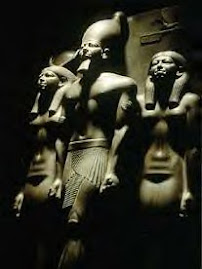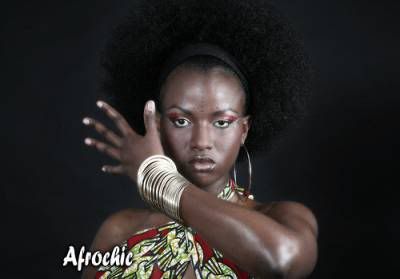
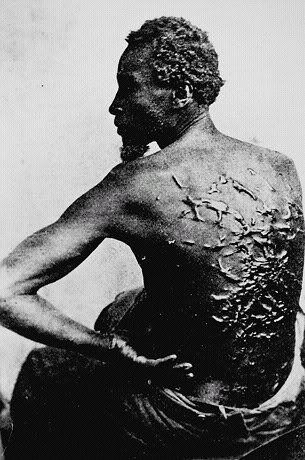
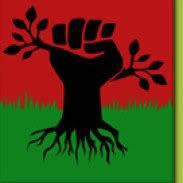
Shem Hotep ("I go in peace").

Black Ice: The Lost History of the Colored Hockey League of the Maritimes, 1895-1925
The Colored Hockey League of the Maritimes was formed in 1895 in Halifax, Nova Scotia, Canada. Comprised of the sons and grandsons of runaway American slaves, the league helped pioneer the sport of ice hockey, changing this winter game from the primitive "gentleman's past-time" of the nineteenth century to the modern fast moving game of today. In an era when many believed blacks could not endure cold, possessed ankles too weak to effectively skate, and lacked the intelligence for organized sport, these men defied the established myths.
The Colored League was one of the most complex sports organizations ever created and was led by Baptist ministers and church laymen. Natural leaders and proponents of black pride, these men represented a concept in sports never before seen. Their rule book was The Bible. Their game book, the coded words and oral history derived from the experiences of American slavery and the Underground Railroad. Their strategy, the principles and teachings of American black leader Booker T. Washington (the founder of the Tuskegee Institute) and a believer in the concept of racial equality through racial separation.

Twenty-five years before the Negro Baseball Leagues in the United States, and twenty-two years before the birth of the National Hockey league, the Colored League would emerge as a premier force in Canadian hockey and supply the resilience necessary to preserve a unique culture which exists to this day. Unfortunately their contributions were conveniently ignored, or simply stolen, as white teams and hockey officials, influenced by the black league, copied elements of the black style or sought to take self-credit for black hockey innovations.

Rewriting American History.
American history has always promoted the myth of the original thirteen colonies. In truth, at the time of the American Revolution, there was no such thing as thirteen colonies. There were actually nineteen - six of those colonies did not agree with the Revolution. Those colonies became Canada.
Rewriting Canadian History.
Patriotism is a strange creature. The Black man, since the earliest days of Canadian history has been one of the greatest defenders of Canada. And yet, his accomplishments have never been fully told nor recorded. It is as if the Black man had never existed. In fact, if it had not been for the Black man carrying a rifle, Canada herself would have never existed. From the earliest days of British North America and the landing of the Black Loyalist forces in Nova Scotia, through to the War of 1812, and beyond, Black regiments served with distinction along the borderlands separating the British and their Canadian counterparts from the Americans. During the American attack on Canada in 1775 and the subsequent siege of Quebec City, it was a Black Canadian regiment, who comprised part of the "undaunted fifty," who defeated the Americans beneath the Citadel of Quebec. The American General Richard Montgomery had invaded Quebec in an effort to make the territory the 14th State of the Union. He was defeated and killed along the slope rising up to the Citadel. The American failure to invade Canada would be repeated during the War of 1812 when, in the early days of the conflict Black Canadian regiments and soldiers led the charge against the American invaders from New Brunswick to the gates of Fort Detroit. In the 1830's, a Black regiment defeated the Mackenzie - Papineau forces ensuring that British North America remained as one. Additionally, Black soldiers were the first to be mobilized in the British Colony on Vancouver Island in 1856 in order to prevent an American annexation of the region following the discovery of gold in the Interior of British Columbia. Historically, when the Americans had moved north, either militarily or years later as simple gold rush prospectors, the first forces they often encountered were Black men dressed in British military scarlet-red uniforms.
Rewriting Black Canadian History.
The history of Black Canadians has, for the most part, either been forgotten, deliberately destroyed, or conveniently ignored. Most historians have often dismissed it, or have viewed it as irrelevant. When it has been discussed, it has often been presented in relation to the cause and effects of American and New World Slavery. If the truth were known, Canadian Black history is as complex and intriguing as that of any European race or nation that has shaped the modern world. It is a history rich in its telling, one that evokes heroism, determination and dignity. It is realism, hidden by popular ignorance and modern theory. It is a legendary story supplanted by modern bias and myths.
Setting the Ice Hockey Historical Record Straight
Our knowledge of the roots of Canadian hockey has been based almost solely on the historical records maintained by early White historians. Because of this, the misconception that hockey is a White man's invention has persisted. We know today, such an assumption could not be further from historical fact. The roots of early Canadian hockey originate with the North American Indians. The roots of modern Canadian hockey originate, in large part, from the influence of an even more surprising source, that of early African-Canadian hockey. For it was Black hockey players in the later half of the nineteenth century whose style of play and innovations helped shape the sport, effectively changing the game of hockey forever.

The First Black Ice Hockey Players - 1820 to 1870
With certainty, we can only date Black hockey to the early 1870's, yet we know that hockey and Black history in Nova Scotia have parallel roots, going back almost 100 years. Among the first reports of hockey being played occur in 1815 along the isolated Northwest Arm, south of Halifax. The date is important for the simple fact that as late as October 1815 the region was not home to a large White settlement but was instead the site of a small Black enclave. Four Black families originally from the Chesapeake Bay area, with a total of fifteen children, had relocated and settled on the Arm. It is reported that these families, Couney, Williams, Munro and Leale, received adequate food, lodging and employment implying that their children were healthy and would have been able to play hockey during the winter months when the Arm was frozen and suitable for skating. Were these children among the first Canadians to play the game of hockey? We do not know. All we can say is that the coincidence between the date of the Northwest Arm's Black settlement and the first records of hockey being played in the area are worthy of reflection.
The Stanley Cup -1893
During the nineteenth century, it had been the English who had introduced the concept of competitive sports to much of the world. In an age of the Victorians and Victorian ideals, sports were regarded as models of teamwork and fair play. Many believed that sports could raise the lower classes and non-White races to a higher level of civilization and social development. All was well, the theory held as long as White men continued to win at whatever sport they played. Hockey was no different. By recognizing Canadian hockey Stanley had accomplished something more. He has given the game "royal acceptance" removing its status as a game of the lowly masses and creating a tiered sport based on club elitism and commercialism. It is no secret that the Stanley Cup was only to be competed for by select teams within Canada. At the time of its presentation, it was a symbol for self-promotion all the while serving a "supposed need". In time, those who controlled the Challenge Cup controlled hockey, effectively creating a "bourgeoisie" sport. A sport that now, by its very nature, would exclude and fail to recognize Black contributions.
The Birth Of All-Black Hockey Teams -1895
The first recorded mention of all-Black hockey teams appears in 1895. Games between Black club teams were arranged by formal invitation. By 1900, The Colored Hockey League of the Maritimes had been created, headquartered in Halifax, Nova Scotia. Despite hardships and prejudice, the league would exist until the mid-1920s. Historically speaking, The Colored Hockey League was like no other hockey or sports league before or since. Primarily located in a province, reputed to be the birthplace of Canadian hockey, the league would in time produce a quality of player and athlete that would rival the best of White Canada. Such was the skill of the teams that they would be seen by as worthy candidates for local representation in the annual national quest for Canadian hockey's ultimate prize - the Stanley Cup.
Black Hockey Leadership -1895
They were more than educated Blacks, in fact they were the first generation of Black men who refused to answer the ageless question: "Whose Negro Are You?" The first of their race to demand what was rightfully theirs; the first generation to refuse to stand at the back of a line.
On The Destruction Of The Colored Hockey League -- 1912
Were the Blacks sending a message to area Whites? Was this "an eye for an eye," a payback for Williams' death and other past events? In order for four White-owned buildings to go up in flames almost simultaneously, it would require an orchestrated group effort. It would require a group of people working in tandem with one goal. If it were the work of Blacks it would have been an effort organized either on Gottingen Street or out in Africville. If indeed this was payback, then who better to accomplish this task than members of the Colored League -- men who had had their league destroyed, lands stolen, and business enterprises crushed at the hands of Whites. On January 12, 1912 someone had sent the White Elite of Halifax a message. The message was simple: "Burn Us -- We Burn You!"
When They Destroyed Africville, They Destroyed The Birthplace of Modern Canadian Hockey -- 1960s
The outright theft and destruction of Africville in the mid to late 1960s remains one of the most shameful chapters in modern Canadian history. To date, though numerous Federal government officials in Ottawa, and scores of Provincial and community politicians in Nova Scotia, have given verbal support to the Black fight for retribution, their words are only designed for political benefit and often carry little if any substance. The politicians say what they feel their audience wants to hear and few are ever called to task for their statements. It is a game that is played well by those who are only interested in securing their own social status and economic being. Africville is more than a Black Canadian tragedy. It speaks volumes about the social character of Canada and all Canadians. For by allowing the weak to be crushed by the strong we set the precedent where men's actions and not the rule of law determine the status quo and the definition of democracy and justice. By allowing the powerful to deny justice and dignity to those within our society who cannot fight back we set a standard for which future disputes are resolved. Laws and democracy can only be protected if people are willing to fight for them.
The Truth Shall Set Us Free.
Today there are no monuments to the Colored Hockey League of the Maritimes. There is no reference to the league in any but a few books on hockey. There is no reference to Henry Sylvester Williams, James Johnston, James Kinney or the scores of players who wore the Colored League uniforms. There is no reference in the Hockey Hall of Fame of the impact that Blacks had in the development of the modern game of hockey. No reference to the Black origin of the slap shot. There is no reference to the Black origin of the offensive style of goal play exhibited by Franklyn. There is no reference to the Black origin of goalies going down on ice in order to stop the puck. There is no reference to the Black practice of entertaining the crowds with a half-time show. It is as if the league had never existed. For hockey is today a sport Whiter in history than a Canadian winter.
Go to the following link for more information.http://www.youtube.com/watch?v=u2QZm8llvig

Wille O Ree was the first in the NHL.
In 1958 a young man named Willie O'Ree made his debut in the National Hockey League. He was with the Boston Bruins for two games. In 1961, after two more years in the minors, O'Ree had a longer stay with the Bruins--41 games. O'Ree never played another game in the NHL.
This may not seem particularly significant, but O'Ree was different from every other NHL player who had come before him during the league's first 50 years. He was black, and there wouldn't be another black in the NHL for 25 years. Hockey was about 10 years late when it came to integration. All the other professional sports, including tennis, bowling, golf, baseball, football, and boxing were racially integrated by 1950. Hockey was the holdout. It was the whitest sport. There were no black players, coaches, team owners, or sportswriters.
Boxing was the first to integrate with black champs Jack Johnson and Joe Louis dropping one Caucasian after another during the first half of the century. Jackie Robinson integrated baseball to great fanfare in 1947, but O'Ree's breakthrough hardly merited a mention. O'Ree did not appear on the nightly news. The New York Times, for example, did not find it newsworthy. Since Canada didn't have the racial strife that plagued the U.S., no one called much attention to O'Ree.
O'Ree played successfully in the minors until the mid-1970s, and he won numerous scoring titles. To this day, he is regarded as a footnote in the world of sport. The hockey encyclopedias give him only passing reference, if any at all. O'Ree was born in 1935 and grew up in Fredericton, New Brunswick, a small city in coal mining region just north and east of Maine.
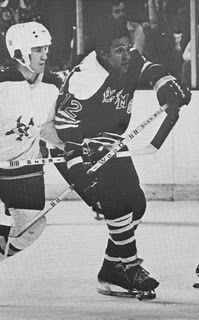
Alton White was another Black Player with the WHA.
As in all things hockey history related in North America, the NHL dominates and the WHA is often dismissed. But the WHA was considered to be big league hockey, and they did sign a black athlete two years before Marson joined the Washington Capitals.
Alton White was born May 31st, 1945 in Amherst, Nova Scotia. That is the same Amherst that has quite the black hockey history and brought Bill Riley to the NHL by 1976.
But White did not learn his hockey until he moved to the cold confines of Winnipeg at the age of 8. His father was falling ill from working at the local foundry, and found work as a sleeping car porter for Canadian National Railroad.
In Winnipeg White grew up playing with and against future NHL stars Pete Stemkowski and Ted Irvine. Under the careful guidance of MJHL Winnipeg Rangers coach Gordie Pennell, White soon too realized he had what it took to play big league hockey.
Alton chased his hockey dreams, toiling in the old IHL with Fort Wayne and Columbus before proving his worth with Providence of the AHL.
"Right now," said White in an interview in 1972, "I look at the NHL rosters and see names like Guy Lapointe, Marc Tardif, Rejean Houle, Don Marcotte, Reg Leach and Ken Dryden." These are people I've played against pretty well. I'm a hustler. A good skater. I'm not really that big so I have to rely mainly on skating and hustling. Compared with the past years, I'm a lot more capable hockey player. I feel I'm a lot better than some guys in the NHL today."
And White had very few complaints about racism at that point in his career.
"Once in a while I hear some wisecracks from people in the stands. But at least they know I'm out there working. I was very well accepted in Providence and haven't had any problems whatsoever. I get along with all the people. The fans treat me exceptionally well."
White's problem in the AHL was he was never affiliated with a NHL team. As a result he never got the big league call up that so many of his teammates did.
"It was tough for me to go up because I was owned by Providence. So, in order for me to go up I'd have had to be sold. I got a little bit down when I saw guys go up when I knew I was a better hockey player."
"But then came the WHA and my big chance."
White played four seasons in the WHA with the New York Raiders, Los Angeles Sharks, and the Michigan Stags/Baltimore Blades. He spent the majority of his final season in the lowly NAHL minor leagues, however.
Now what happened to Alton White following the 1974-75 season is a mystery to me. He definitely quit professional hockey, and may have headed off to Vancouver where he summered and worked for his brother Ken's construction business.

Chicago Blackhawks My Favorite Hockey Team.
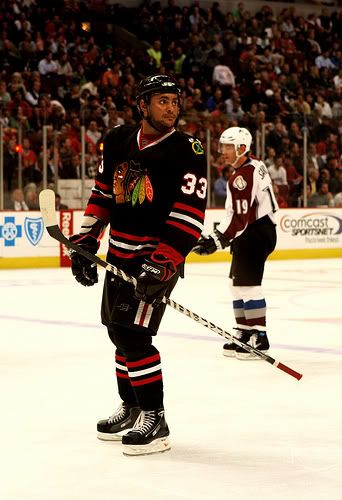
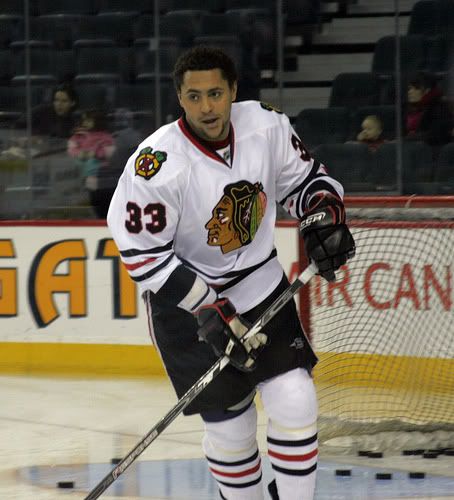
Chicago Blackhawk's Dustine Byfuglien my favorite Hockey player.
There are a few Black Hockey Players in the NHL today.





